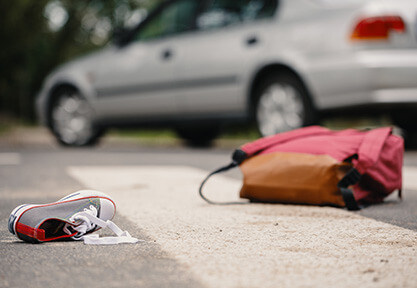I’ve successfully recovered compensation for many hundreds of pedestrians injured in motor vehicle accidents over the past four decades. Yet, in the vast majority of these cases, the investigating police officers have blamed my clients for the accidents and exonerated the drivers of the vehicles that hit them.
Why do the police do this?
Here are my theories:
- The police generally accept the driver’s version of events because the pedestrian is too injured and ‘out of it’ to be interviewed or to provide a coherent account.
- In order to convict a driver of a traffic offence, such as negligent driving causing grievous bodily harm, the police have to prove the offence beyond reasonable doubt. This criminal standard of proof can often be a tall order, particularly in the absence of eyewitnesses. Even though the standard of proof is lower for a civil personal injury claim, unless the police have strong enough evidence to press criminal charges, they often exonerate the driver of any blame.
- The police have little, if any, knowledge or understanding of civil law, as opposed to criminal law which they deal with every day, and therefore of the law of negligence for a pedestrian’s personal injury claim. If they had such knowledge, they would know that the Courts regard motor vehicles as ‘lethal weapons’ that can inflict untold damage on pedestrians whilst drivers themselves remain unscathed. It is because of this that the Courts place an extremely high level of duty of care on drivers in motor vehicle claims – much more so than on pedestrians to take reasonable care for their own safety.
What are the consequences for injured pedestrians?
- Many injured pedestrians forgo viable compensation claims because they wrongly assume that they must have been totally at fault because the police have said so. They are unaware of the concept of contributory negligence and discounted claims, or the easier civil standard of proof that the law imposes on them, namely to prove the driver’s negligence on the balance of probabilities (rather than beyond reasonable doubt).
- Many insurance company claims officers treat the police’s apportionment of blame as gospel and wrongfully reject compensation claims. The upshot is that the injured pedestrian is denied timely medical and rehabilitative treatment and is vulnerable to suffering severe financial hardship, particularly if the injuries prevent the accident victim from earning an income. This in turn can send accident victims into a hopeless spiral of misery and despair.
What can be done?
A good start would be to educate traffic police and insurance claims officers on the law of negligence, and, in particular, to emphasise the enormous onus on drivers to be extremely careful not to inflict injuries on pedestrians.
Another possible solution is for police to desist from having to make a clear cut decision at the scene in their police reports as to which party they consider caused the accident. In NSW police reports, officers have to answer “Yes/No” as to whether a particular party was responsible for an accident. This leaves no room for investigation or situations where both parties are partly to blame. I would therefore call on question being deleted from police reports.
If you were a pedestrian injured in a motor vehicle accident, I would urge you to seek legal advice. Even if the police blamed you for the accident, you may well be entitled to claim compensation from the CTP insurer of the vehicle that hit you. The blameless accident provisions of NSW motor vehicle legislation may also benefit you. I frequently take over cases from other lawyers who have told pedestrians that they do not have a claim. If this sounds like you, contact me today on 1800 251 800 or make an online enquiry for a no obligation second opinion.
Written by Tom Goudkamp
Tom Goudkamp is Managing Director of Stacks Goudkamp. He has over 40 years of experience of successfully bringing compensation claims for people injured in motor vehicle accidents. He is also a CARS Assessor and co-author of the ‘New South Wales Personal Injury Law Manual’.



